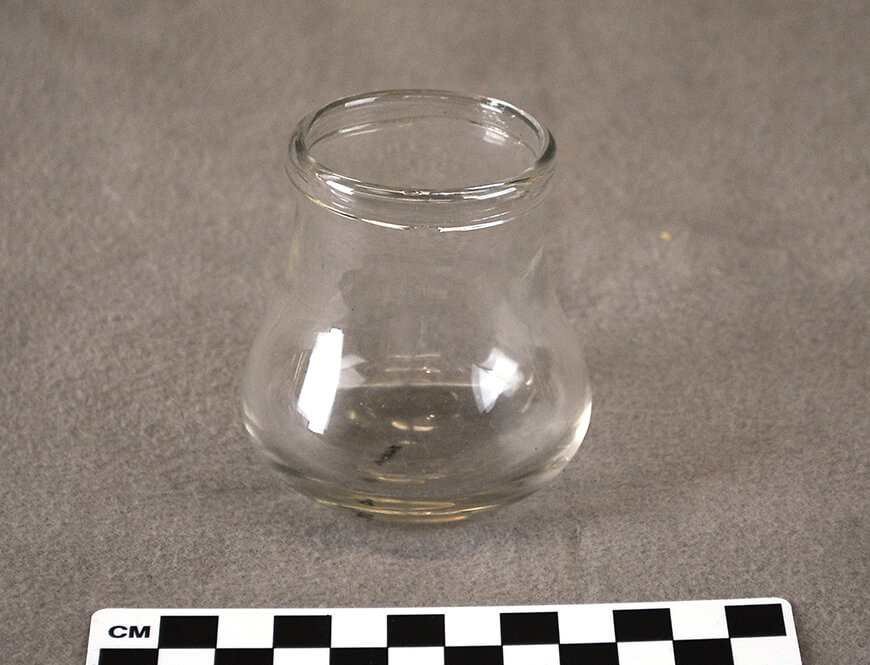The average human adult contains about 10 pints of blood. Loss of blood due to an injury, car accident, surgery or any other reason can lead to shock, or worse, death. Which is why blood donors are always needed. However, throughout history bloodletting, a type of procedure in which blood is removed from the body, was said to benefit one’s health. The object pictured above is a bleeding cup used from around 1820-1900. The cup is made out of clear blown glass. Bleeding cups were one of many tools used during the practice of bloodletting.
Removing blood from the body, or bloodletting, can be traced back to the ancient Egyptians and Greeks. It was believed that the body contained four humors. The humors consisted of blood, phlegm, black bile, and yellow bile and they needed to be balanced or else a person would fall ill. At this time it was also believed that blood did not circulate, but stayed in one place. As a result when a person got ill the remedy would be to remove the excess blood. Bloodletting was prescribed as a remedy to things like fever, back pain, headaches, acne, and even bone fractures.
Getting bled was common and many people chose the practice because it was thought to be preventative medicine. Some of the tools used for bloodletting included were scarificators, syringes, spring loaded lancets, leeches, and a glass cup. The cup would be heated and placed over the skin. As the air inside the cup cools it creates a vacuum and causes a blood filled blister. An object called a scarificator would be used and the cup would be used again to collect the blood. Bloodletting using a bleeding cup is also called cupping. Cupping can also be done without removing blood and is said to help blood flow and treat pain. There are different kinds of cupping therapy and certain cultures still practice it today to treat and prevent disease. However, cupping therapy has not been proven effective by scientific research studies.
During the Middle Ages bloodletting was performed by barbers rather than doctors. The barbers became known as barber surgeons and would perform surgery on people. The barber surgeons would not only cut hair but also perform minor surgeries, bloodletting, enemas and tooth extraction. Customers could easily find barber surgeons by looking for the red, white, and blue pole outside the shop. Some of these barber poles can still be seen today and it is said that the colors represent the blood, bandages, and veins during bloodletting.
Bloodletting was practiced in different parts of the world in including the United States. George Washington was a firm believer in bloodletting, an may have even died due to excessive bloodletting. After getting sick from being out in the rain and snow, Washington complained of a sore throat and could not swallow. When doctors were called he was bled of 3.75 liters of blood in 9-10 hours. Although, he did feel better for a short while he did not make it and passed away. Whether bloodletting played a role in his death is often debated.
Today removing blood from the human body is called phlebotomy and it is only done for diagnostic purposes or when donating blood.
